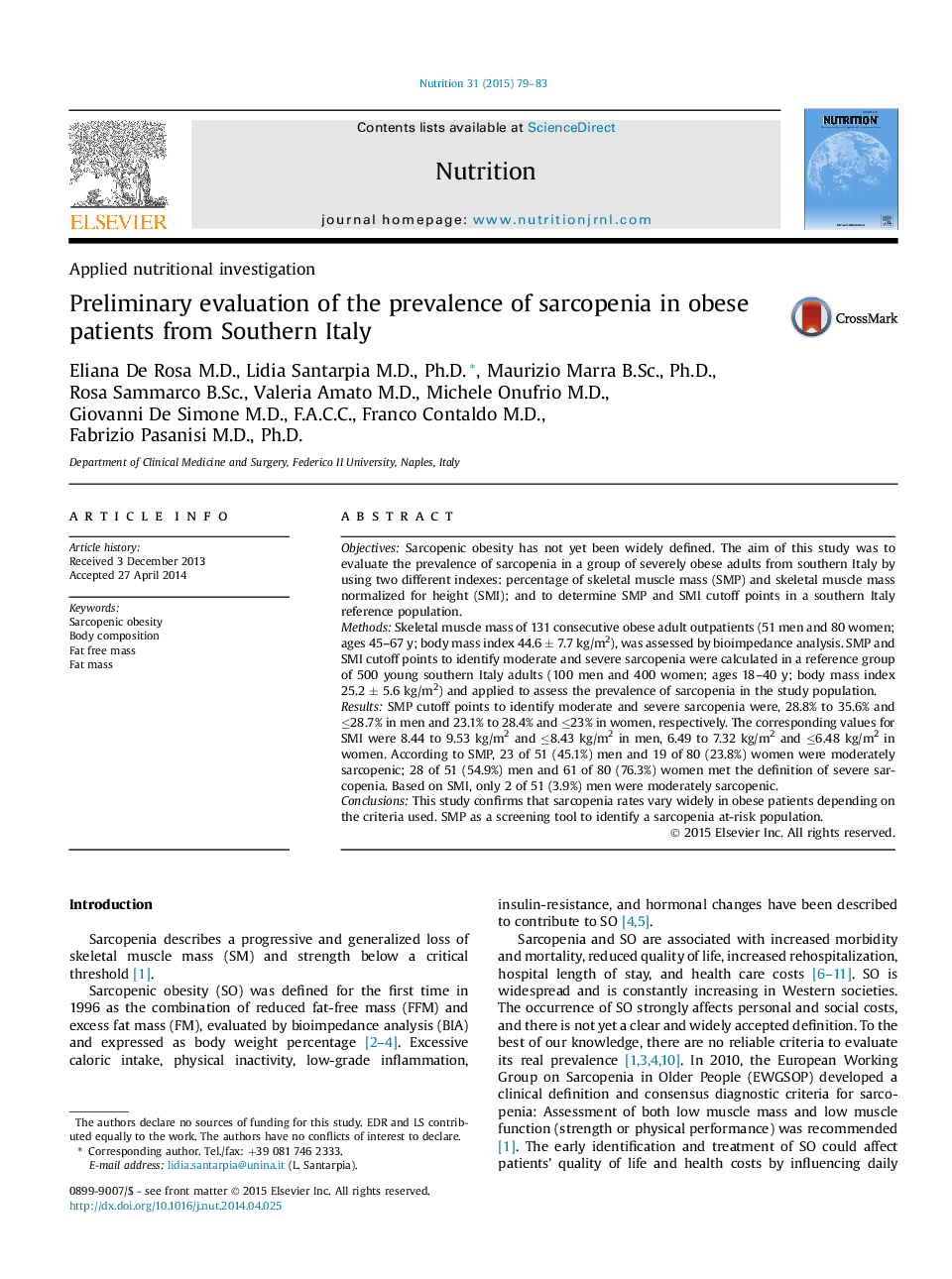| Article ID | Journal | Published Year | Pages | File Type |
|---|---|---|---|---|
| 6089489 | Nutrition | 2015 | 5 Pages |
ObjectivesSarcopenic obesity has not yet been widely defined. The aim of this study was to evaluate the prevalence of sarcopenia in a group of severely obese adults from southern Italy by using two different indexes: percentage of skeletal muscle mass (SMP) and skeletal muscle mass normalized for height (SMI); and to determine SMP and SMI cutoff points in a southern Italy reference population.MethodsSkeletal muscle mass of 131 consecutive obese adult outpatients (51 men and 80 women; ages 45-67 y; body mass index 44.6 ± 7.7 kg/m2), was assessed by bioimpedance analysis. SMP and SMI cutoff points to identify moderate and severe sarcopenia were calculated in a reference group of 500 young southern Italy adults (100 men and 400 women; ages 18-40 y; body mass index 25.2 ± 5.6 kg/m2) and applied to assess the prevalence of sarcopenia in the study population.ResultsSMP cutoff points to identify moderate and severe sarcopenia were, 28.8% to 35.6% and â¤28.7% in men and 23.1% to 28.4% and â¤23% in women, respectively. The corresponding values for SMI were 8.44 to 9.53 kg/m2 and â¤8.43 kg/m2 in men, 6.49 to 7.32 kg/m2 and â¤6.48 kg/m2 in women. According to SMP, 23 of 51 (45.1%) men and 19 of 80 (23.8%) women were moderately sarcopenic; 28 of 51 (54.9%) men and 61 of 80 (76.3%) women met the definition of severe sarcopenia. Based on SMI, only 2 of 51 (3.9%) men were moderately sarcopenic.ConclusionsThis study confirms that sarcopenia rates vary widely in obese patients depending on the criteria used. SMP as a screening tool to identify a sarcopenia at-risk population.
